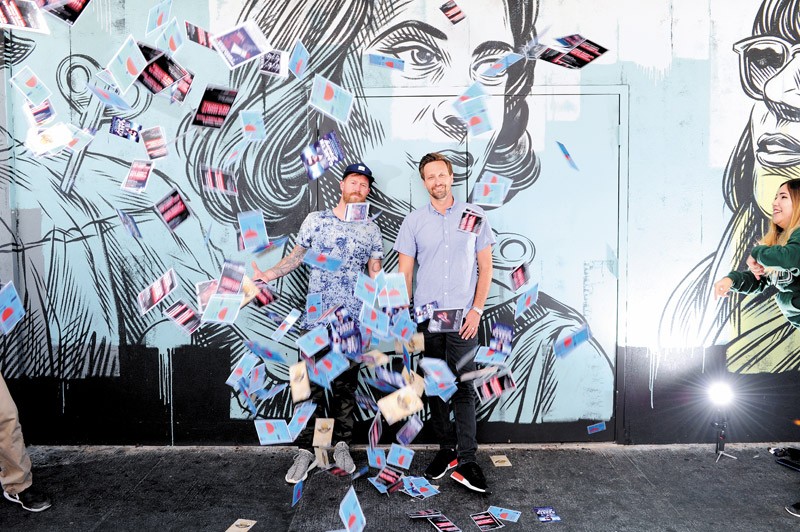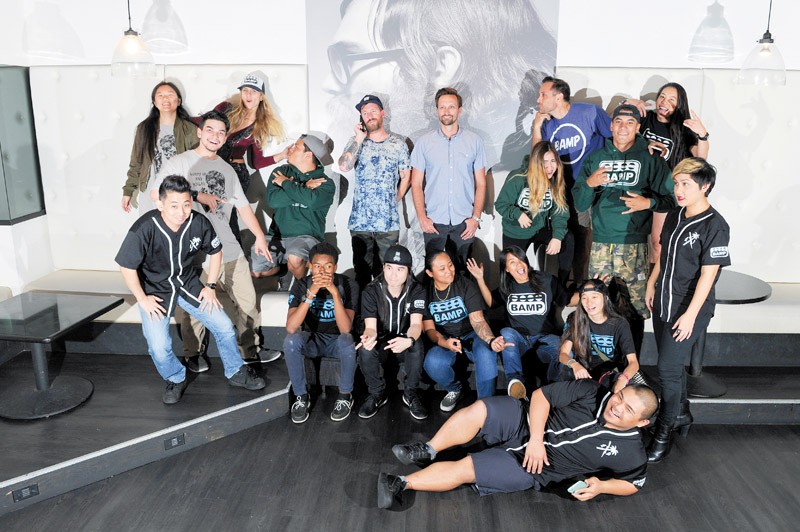Bringing IT

Philip Pendleton (left) and Matty Hazelgrove
For the past 12 years, BAMP Project has been rocking local crowds, and its success stems from giving audiences what they want and the artists what they need
There are few places in this country that embrace music as wholeheartedly as Hawaii. Rare is the barbecue that doesn’t feature at least one guitar, and it’s a given that, if there is a gathering of kids at the bus stop, an ukulele will be present. But one must juxtapose this love for the lyrical with the dearth of musical acts that frequent these Islands, a problem that only threatened to be exacerbated with the death of legendary concert promoter Tom Moffatt in December.
Those fears can be allayed quickly if one pays attention to what has been happening in the renovated space behind Ala Moana Center known as The Republik. It is here that the unusually named BAMP Project has taken up residence and is breathing life into a concert scene that has been sorely lacking. Last year alone it brought in 130 shows, a number it has increased by 30 percent each of the last three years.
Though it now is garnering attention with splashy acts like Journey and Janet Jackson, and coming in July, Duran Duran, BAMP Project has built its brand on smaller bands through the years.
The first show it put on was with Steel Pulse back in 2005 at Waikiki Shell, and for a while it appeared it also might be its final one.

The BAMP Project crew with Matty Hazelgrove and Philip Pendleton — that’s promotions and marketing guy Flash Hansen at top right, chin on hand
“It was on a Wednesday and everybody thought we were crazy,” says co-founder Matty Hazelgrove. “But at that time we ended up breaking the walk-up record. It was a good turnout, but it wasn’t looking good until about 12 hours before the show. Many people who are well established in the business out here advised us to cancel the show and just walk away. ‘You guys are good guys, we don’t want to see you lose all this money, maybe you should just cancel the show.’ We didn’t know any better and we just pushed through, and it ended up turning out real well for us.”
Music has been a lifelong love affair for Hazelgrove, starting out with the trumpet in sixth grade, progressing into the symphonic band in high school followed by guitar and bass in college. He pieced together bands in his rural home of Rabun County, Georgia, tucked away in the northeastern tip of the state. They booked performance spaces in pubs, social halls, youth centers — anywhere that would have them, and plastered any available flat surfaces with fliers for their shows.
“Looking back on it now it is exactly what we do, but we do it on a much grander scale,” says Hazelgrove, who moved to Hawaii in 2001.
Eventually his guitar was stolen, and lacking the funds to purchase another one, his music career on the stage was effectively over, but his promotions career had just begun. After moving to the Islands he formed BAMP Project, and its name origin is not as mysterious as many have made it out to be.
“A lot of people have tried to come up with different versions of what it might be. We have heard lots of random ideas of what it could stand for, but it’s simply an acronym for the original members of the company: Brad (Smith), Aubry (Boutin), Matty (Hazelgrove) and Philip (Pendleton),” says Hazelgrove.
They did things the right way, treating the musical acts with class and bringing disparate talent to the Islands, even though they knew that sometimes it would mean a financial hit.
“We take most opportunities that come our way that seem like they are worth taking the risks on. Not everything is going to be successful, there is a variety of different reasons to do shows, but you can’t hit a home run unless you swing the bat, so we swing the bat as many times as we can and see what happens,” says Hazelgrove.
Sometimes that means supporting an artist who is virtually unknown in the Islands, so they can show them love before they hit it big.
“The other reasons (besides financial gain) are forming relationships, perhaps an artist that isn’t very well known right now, but we believe in them and take a chance on them knowing we won’t make any money or likely lose money. But you are forming a relationship that will grow as the artist grows, so that five years from now, when they come back through and they have a No. 1 single, they will want to work with us because we took care of them last time,” explains Hazelgrove.
Other times it is more about expanding the artistic scene here in Hawaii and exposing the population to acts they would otherwise not have a chance to see.
“We feel there are events that people should see, not that we are the end-all-beall, listen-to-us-we-know-what’s-good-for-you, but there are shows that we feel can inspire people. It might have 200 people there, but it is a show we want people to see, and will be good for the musical community and the kids watching to help them get inspired, get creative,” he adds.
Recently, one of these acts was Nicholas Jaar, the Palestinian/Chilean experimental artist from NYC who performed with a multitude of keyboards, saxophones, computers and his own voice.
“It was a show that wasn’t financially successful for us, but it got a lot of people talking, it was incredible,” gushed Hazelgrove. “I left the show saying that was my favorite show that we ever lost money on! We were happy to present that show and give people the opportunity to see it.”
Educating the public is a nice mission, but without full coffers it will be a short career for Hazelgrove and his partners. Showcasing big stars can mean big dollars, which allows BAMP Project’s mission to continue, and also, someone has to fill the void left behind by Moffatt.
“Tom was the leader of Hawaii, he pioneered the industry out here. We don’t feel like we can fill his shoes, no one can do that, but the best we can do is to follow in his footsteps,” says Hazelgrove, who sees bigger artists trusting them now that they have a decade-long resume.
“Over the last 12 years we have been able to create relationships with agents and management groups, and they know they can trust us, that we are going to take care of their artists when they come out. We pride ourselves on giving the artist what they need, the production value that their show requires, and because of that we get more opportunities.
“We want to do everything, but we know it takes time. You don’t just pop up and say you want to do Elton John, you have got to prove yourself and we have been proving ourselves slowly. We feel more opportunities are going to come our way now that Tom is no longer with us, so you will start seeing more shows like that from us and we will be bringing more of those level of shows, but we will not abandon what we are doing with the smaller-level shows.”
The facilities they have at their disposal at The Republik were built to their specifications after their longtime relationship with Pipeline Cafe came to an abrupt end when it closed its doors in 2011. They feature a line array sound system, an illumination system featuring two dozen moving lights, and three LED walls, one of which is a staggering 9 feet tall and 20 feet wide.
“We put a lot of money in upfront for a facility that can handle the production level for the shows that we are doing, but on a per show basis it is better for us,” says Hazelgrove.
The future looks bright for BAMP, especially after the announcement of the Duran Duran shows in July, which they are working with Live Nation to arrange, but as glamorous as the job may seem from the outside, you are always dancing on the edge of a knife.
“The downside is it is way easier to lose more money than you can ever make,” says Hazelgrove. “Regardless of the financial outcome of the show, the customers are coming for the experience that they paid for, the artist needs to be taken care of at the level they expect. Not everything is a winner, but you still have to treat everybody the same way. We don’t have investors, we are a momand-pop shop and if a show isn’t selling well, it can be stressful.”






